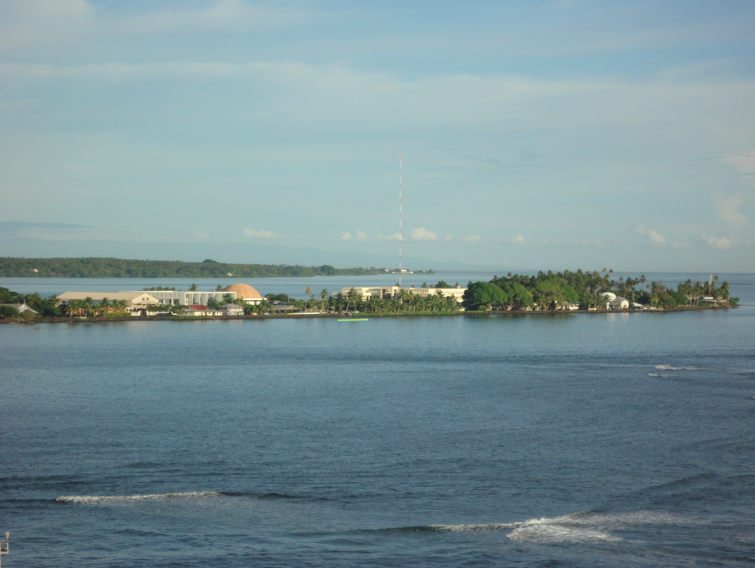You are here
Climate scientists help protect democracy in Samoa
Australian researchers are protecting democracy by helping ensure that Samoa’s new parliament house will withstand natural hazards. The new building replaces one built in 1972 that was battered by numerous devastating tropical cyclones.
The greatest risk to the Samoan parliament chamber, or Maota Fono, is inundation from cyclone-related storm waves and surge. As part of the Pacific-Australia Climate Change Science and Adaptation Planning (PACCSAP) program, Dr Ron Hoeke and Dr Kathleen McInnes from CSIRO quantified this risk using high resolution modelling for Apia’s coastline.
‘A challenge for adaptation planning is sourcing relevant information on extreme sea levels. For the small islands of the Pacific, a range of factors can contribute to sea level extremes, the most significant typically being waves from tropical cyclones or other storms,’ says Ron.
Also contributing to extreme sea levels are tides, storm surges, and seasonal and interannual variability.
Tide gauges provide an essential data source. However, there are few gauges and they are typically sited in sheltered harbours, away from areas exposed to waves. So one side of the island can be suffering wave-driven inundation, while the tide gauge on the other side of the island measures nothing unusual.
‘We create models of tropical cyclone behaviour from historical cyclones and use them to better understand the likelihood of severe impacts. These models are combined with information on tides and regional sea level changes (both variability and rise) to develop planning benchmarks for storm tides and extreme waves.’
‘Modelling coastal hazards accurately requires high-resolution coastal elevation data (topography and bathymetry). PACCSAP supported lidar surveys of the Apia coastline prior to the study. These surveys are also necessary to understand the risks hazards pose to local infrastructure and are an essential ingredient for successful climate adaptation.’
‘We use our models of cyclone behaviour together with simulated storm waves, surge and tides to estimate extreme sea level return periods,’ Ron explains.
‘Storm surges and waves combined can raise sea level by well over a metre around Apia. Importantly, we found that sea-level rise will likely increase the amount of storm wave energy reaching the shore by up to three times over the next 100 years.’
What is the sea level rise estimate for your region?
Do you have access to reliable sources of high-resolution information for local flooding risk?
qtfd3gf7w9crm2as.png





